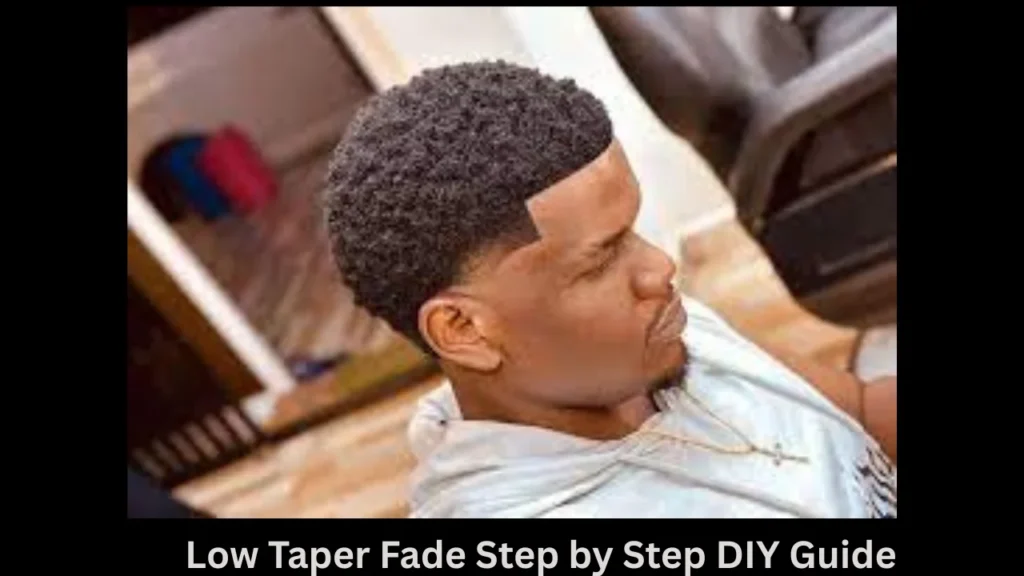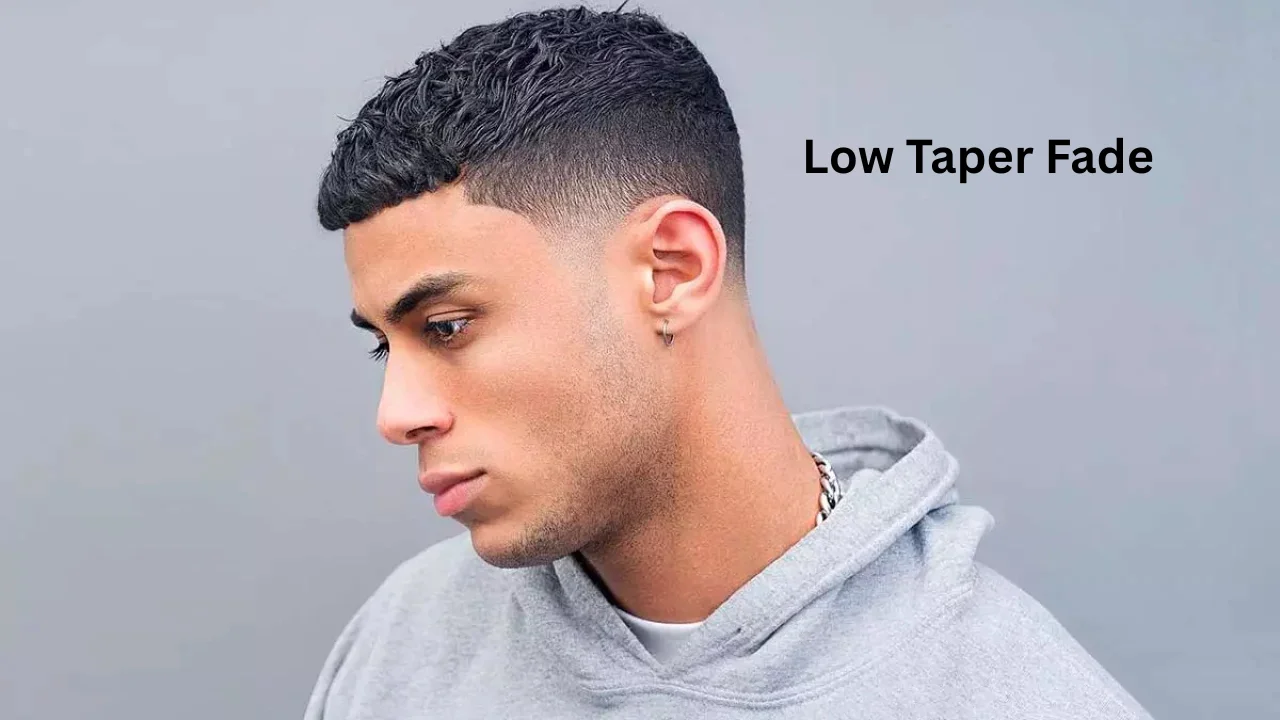A fresh haircut can change the way you look and feel. Among today’s most requested styles stands the low taper fade. This cut gives a clean outline, gradual blending, and a modern vibe while staying professional enough for school or work. Because it leaves more length on top, you can wear it with waves, curls, or a slick pompadour and still enjoy the sharp, tidy edges barbers love to show off.
Barbers around the world praise the style for its balance. It keeps things neat around the ears and neckline but never looks too extreme. That mix of subtlety and edge makes the low taper fade popular with athletes, office workers, and creative professionals alike.
What is low taper fade
When you read style blogs, a haircut sometimes sounds like a person with a personality of its own—confident, polished, and adaptable. In that playful spirit, imagine the low taper fade as the friend who fits every occasion. He shows up crisp at a wedding but stays casual at a backyard cookout. She complements streetwear but never looks out of place next to a tailored suit. This “person” is easy-going, looks good in every photo, and never steals the entire spotlight from you.
ALSO READ: Ar15.Com Forum Customization And Support
Behind the humor is a simple truth: the cut serves people of many ages, hair textures, and lifestyles. Whether you are a teen experimenting with style or a busy parent who needs low-effort grooming, this haircut adjusts to your daily routine without demanding much.
Origins and Evolution
Fades grew inside Black barbershops during the late 1980s hip-hop era. As music videos spread, so did interest in precise clipper work. Over time, barbers began exploring where the blend started—high on the head, mid-ear, or closer to the collar. The lower version entered the mainstream because it kept more weight above the temples, offering both structure and versatility.
Barber competitions pushed skill levels further. Artists combined scissor-over-comb techniques with clipper guards as small as zero. Social media then turned these local styles global. Today, the low taper fade appears on NBA players, K-Pop singers, and even high-fashion runways, proving that craftsmanship has no boundaries.
ALSO READ: Newsweek Wordle Hint Today Game Changer
Key Features
- Gradual blend: Hair shortens smoothly from temple to neck, with the shortest point just above the natural neckline.
- Preserved length on top: You keep ample room for curls, coils, or any shape you prefer.
- Soft outline: The fade traces the ear and dips gently at the nape, offering a shadow effect rather than a hard line.
- Versatility: Pair it with a fringe, side part, or textured quiff without needing daily salon visits.
These traits make the style comfortable for formal events yet relaxed enough for weekend sports.
How to Ask Your Barber
Communication saves time and avoids regret. Walk into the shop ready to explain:
- You want a low taper fade that starts just above the ear, not mid-head.
- Keep at least two inches on top for styling flexibility.
- Use a #1 guard at the shortest point for a subtle shadow rather than skin.
- Square or round the neckline depending on your head shape—square for a sharper finish, rounded for natural softness.
Show reference photos if possible. A visual guide means less guesswork and more satisfaction when the mirror turns toward you.
Low Taper Fade Step by Step DIY Guide

Cutting your own hair takes patience, but many succeed by following these basic steps:
- Prep tools: Clippers with guards 1–4, scissors, two mirrors, and a comb.
- Section top: Clip away the crown hair. Start fading with guard #4 around the sides.
- Create the taper: Switch to guard #3, then #2, working downward in small strokes. Keep the lowest half-inch for guard #1.
- Blend: Flick the clipper out as you move upward to erase harsh lines.
- Trim top: Release the crown section, comb upward, and point-cut for textured movement.
- Detail: Clean neckline with the trimmer. Check symmetry using both mirrors before showering off loose hair.
Work slowly. Multiple light passes beat one heavy pass every time.
Best Face Shapes and Hair Types
Oval faces accept nearly any haircut, and this one is no exception. Round faces benefit because the extra height on top elongates proportions. Square jaws look sharper thanks to the tight sides accentuating strong bone structure. Even heart-shaped faces gain balance as the taper softens the narrow chin.
Straight, wavy, and curly textures all pair well with the cut. Coarse coils maintain shape longer, while silky hair may need matte paste for grip. Super-fine strands can still enjoy the fade; just keep the top slightly shorter so it does not collapse.
Styling Products
- Matte clay: Adds thickness and holds without shine for a natural daytime look.
- Curl cream: Defines coils without stiffness, perfect for textured tops.
- Sea-salt spray: Boosts volume in fine hair before blow-drying.
- Pomade: Gives classic shine when you want a sleek side part or pompadour.
Apply a dime-sized amount, warm it between palms, then work from back to front. Less is more; you can always add.
Care and Maintenance
A haircut lives or dies by upkeep. Light trims every three weeks maintain that fresh barbershop silhouette. At home, brush gently to train growth direction and prevent cowlicks. Wash hair two to three times a week with sulfate-free shampoo; daily washing strips oils and leaves ends dry.
Use a silk pillowcase if possible—cotton roughs up cuticles and ruins the smooth fade line. Protect scalp in extreme sun with a hat or leave-in UVA spray. Consistent care keeps the low taper fade sharp even between appointments.
Common Mistakes
Failing to communicate “low” versus “mid” can change the entire result. Some clients ask for a fade yet do not mention the desired height, so barbers guess. Another mistake is ignoring natural growth patterns. If your crown swirls strongly, forcing a slick back may expose gaps.
Using heavy grease daily also flattens the top and darkens the taper, hiding its gradient. Choose lighter products and rinse thoroughly at night to preserve the blend.
Frequently Asked Questions
How long does a low taper fade last?
A low taper fade usually looks its best for 2 to 3 weeks. After that, the clean lines start to blur as the hair grows. To keep it fresh, visit your barber for a quick touch-up or learn to trim the edges at home.
Is a low taper fade good for curly hair?
Yes! The low taper fade works great with curly, wavy, or coiled hair. It keeps the curls defined on top while tapering the sides neatly. Just use a curl cream or leave-in conditioner to help maintain shape and shine.
Can I get a low taper fade with a beard?
Absolutely. A low taper fade blends smoothly into a beard if done correctly. Your barber can create a gradual transition from the fade into your facial hair, giving you a clean and balanced look.
Conclusion
The low taper fade is more than a passing trend; it is a classic foundation that supports countless personal twists. Because it blends close to the neckline, the style keeps you looking groomed without stealing valuable length on top. It adapts from boardrooms to basketball courts and from satin gowns to street festivals.
Plan your barbershop visit with photos, clear guard lengths, and realistic maintenance expectations. With proper trims, gentle products, and the confidence that comes from a well-executed cut, you will find the low taper fade becomes a trusted partner in your daily style journey.
